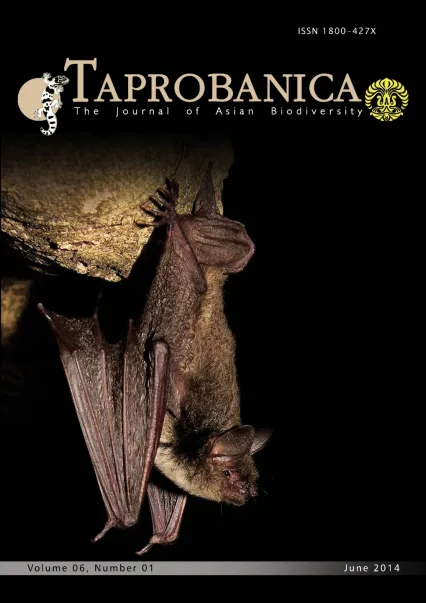

v6i1.123
Volume 6 | Number 1 | May 2014
Major Article
ISSN: 1800-427X (print)
eISSN: 1800-427X (online)
DOI:10.47605/tapro.v6i1.123
Submitted date: 21 January 2014
Accepted date: 14 March 2014
Published date: 29 June 2014
Pp. 21–26, Pl. 8.
USE OF TEA PLANTATION BY WILD MAMMALS IN TAMIL NADU, INDIA
V. Gokula* & C. Thangatamil
*Corresponding author. E-mail: gokulae@yahoo.com
Abstract
Wild mammals that live in the fragmented primary forests in Western Ghats often leave the fragment due to resource shortages and use the nearby tea plantation either to forage or as a corridor to connect other fragments, during which time human-wildlife conflict is inevitable. Hence, understanding the need of wild mammals using the tea plantations is essential to minimize this conflict. We researched the use of tea plantations by wild mammals between October 2011 and January 2012 in Kolacamby, Nilgiris District, Tamil Nadu, India. Walks were made to determine the relative abundance of wild mammals inside the plantation. Scats of sloth bear (Melursus urisnus[i]), tiger ([i]Panthera tigiris), and leopard (Panthera pardus) found inside the plantation were analyzed to determine food habit. In addition, workers were informally interviewed about man-wildlife conflict. All major carnivores of the Western Ghats ecosystem were recorded in the area. Despite the richness of the fauna in the fragments, minimal human-wildlife conflict was reported.
Key words : habitat use, human-wildlife conflict, Kolacamby, mammals, tea plantation
Section Editor: Colin A. Chapman
eISSN: 1800-427X (online)
DOI:10.47605/tapro.v6i1.123
Submitted date: 21 January 2014
Accepted date: 14 March 2014
Published date: 29 June 2014
Pp. 21–26, Pl. 8.
USE OF TEA PLANTATION BY WILD MAMMALS IN TAMIL NADU, INDIA
V. Gokula* & C. Thangatamil
*Corresponding author. E-mail: gokulae@yahoo.com
Abstract
Wild mammals that live in the fragmented primary forests in Western Ghats often leave the fragment due to resource shortages and use the nearby tea plantation either to forage or as a corridor to connect other fragments, during which time human-wildlife conflict is inevitable. Hence, understanding the need of wild mammals using the tea plantations is essential to minimize this conflict. We researched the use of tea plantations by wild mammals between October 2011 and January 2012 in Kolacamby, Nilgiris District, Tamil Nadu, India. Walks were made to determine the relative abundance of wild mammals inside the plantation. Scats of sloth bear (Melursus urisnus[i]), tiger ([i]Panthera tigiris), and leopard (Panthera pardus) found inside the plantation were analyzed to determine food habit. In addition, workers were informally interviewed about man-wildlife conflict. All major carnivores of the Western Ghats ecosystem were recorded in the area. Despite the richness of the fauna in the fragments, minimal human-wildlife conflict was reported.
Key words : habitat use, human-wildlife conflict, Kolacamby, mammals, tea plantation
Section Editor: Colin A. Chapman
- List of Articles & Contents





